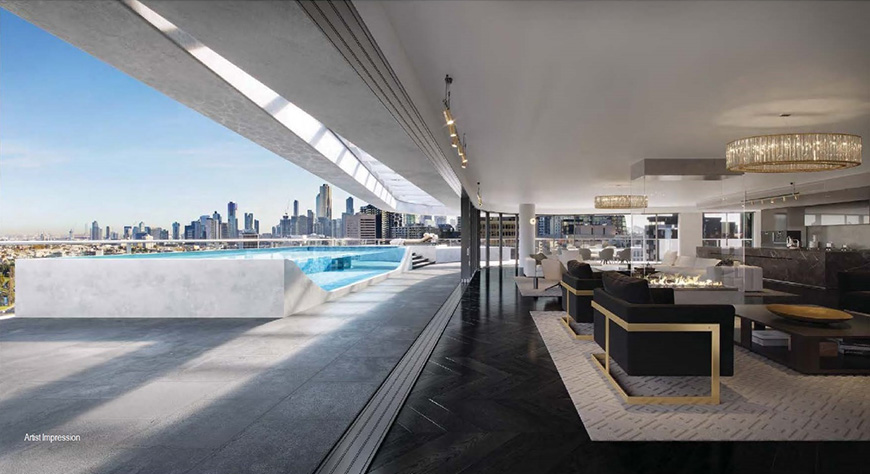
"Tell 'em they're dreaming!": building development illustrations and the Australian Consumer Law

Identifying when an illustration is an "artist's impression" and including appropriate disclaimers regarding reliance on artwork are important steps, but sometimes more may be needed.
A recent case in the Federal Court is an important reminder to property developers – and indeed to anyone using artists' impressions in advertising – that there are limits on the extent to which an image used in advertising and promotion can depart from the reality.
The claim in Ripani v Century Legend Pty Ltd [2022] FCA 242 related a so-called "hero render" – an attractive image of a specific part of a development that is used prominently in advertising as indicative of the development as a whole. The image showed a view of the living room and external terrace of an apartment in the proposed high-rise development (apartment 1401).

In the image, the opening between the two areas extends for most of the length of the room, and the floor of the interior appears level with the floor of the terrace, giving an effect of seamlessness between the indoor and outdoor spaces (the "flow through" design). The image was prominently displayed in advertising for the development, and included the words “Artist impression” at the bottom.
The purchasers argued that they purchased the property off the plan in reliance on the representation conveyed by this image, that apartment 1401 would have the "flow through" design.
The evidence established that Century Legend knew it would be impossible (for structural and design compliance reasons) to construct the apartment with the long free span opening between the two areas as shown in the image. In the apartment as constructed, the opening would extend only about three metres. There was also evidence from Century Legend's architects, to the effect that they had warned Century Legend that the image was misleading in depicting the free span opening, as this could not be constructed.
In determining whether conduct is misleading or deceptive in contravention of section 18 of the Australian Consumer Law, all of the circumstances must be taken into account. Justice Anastassiou considered that the following factors were particularly relevant in the present case:
- the purchasers were purchasing apartment 1401 – the specific apartment depicted in the "hero render";
- the purchasers specifically told the selling agent of their wish for an apartment in which the indoor and outdoor spaces were seamlessly connected, and the agent suggested apartment 1401;
- Century Legend continued to use the "hero render" in advertising, despite being aware of the inaccuracy; and
- with the purchase occurring "off the plan" there was no reasonable basis on which the purchasers could have realised the image was inaccurate.
Importantly, neither the words "artist impression" nor the disclaimer on page 96 of the product brochure were sufficient to qualify the representations in this case.
The words "artist impression" conveyed that the images were not photographs, and that the finished apartment may not be exactly as it appeared in the images. However, in the context in which the render was given to the purchasers, the words did not suggest that the key elements of the render will not be constructed, or, at the very least, are not then intended to be constructed.
It was acknowledged that, to a consumer viewing the "hero render" on a billboard, considering a different apartment from the one shown, the representation may have been different. For example, in HW Thompson Building Pty Ltd v Allen Property Services, a 1983 case, an artist's impression showing a swimming pool that was not an amenity available to all units in the development, was nevertheless not misleading. This was because any impression from the image was clearly dispelled by the express terms of the contract, on which the purchaser also received legal advice.
Justice Anastassiou was critical of the disclaimer appearing in small print at the end of the development catalogue, finding that it was ineffective to dispel the effect of the misrepresentation. The disclaimer stated that no liability was accepted for reliance on the brochure, and included statements that "dimension and specifics are subject to change without notice" and "illustrations and photographs are for presentation purposes and are to be regarded as indicative only". Justice Anastassiou referred to the word "indicative", noting that "in the present context, the render has no work to do, save to mislead, if it is not indicative of the apartment". His Honour also criticised the part of the disclaimer which stated that “[p]urchasers must rely upon their own enquiries and inspections” – noting that given the purchase was off plan, it was not possible for the purchasers to inspect the property and, indeed, the only thing which they could “inspect” were the renders. Overall, Justice Anastassiou considered that the disclaimer was inadequate to correct the “overwhelmingly misleading impression conveyed by the render”.
Justice Anastassiou found in favour of the purchasers and ordered that they were entitled to rescind the contract of sale. Century Legend has appealed this decision, and the appeal is to be heard by the Full Court in August 2022.
What you should remember when using images in advertising
This case represents an extreme example of misleading use of an image – there was evidence of deliberateness in the conduct, and the inaccuracy related to a feature that was key to the purchasers' decision to purchase. Although insufficient on the facts of this case, it is still important to identify when an illustration is an "artist's impression" and it remains worthwhile to include appropriate disclaimers regarding reliance on artwork.
However, this case serves as a reminder of the power of illustration in advertising and the limitations of disclaimers. It also demonstrates the importance of having processes to identify and address any significant inconsistencies and to respond to new information as it comes to hand (such as, in this case, becoming aware that a feature shown in a render is not feasible).
Get in touch
